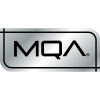Dear trubertq / Jakmqa,
Interesting. By tempering i presume the meaning is "almost" thawing, ie still firm texture,?
I cannot recall ever seeing a published seafood haccp plan for the type of process to which you are referring, can you give any accessible links to one ?.
Or is this some kind of "ad hoc" arrangement for customers benefit ?. It sounds vaguely analogous to the "famous" fresh fish table occasionally seen in supermarkets but i am sure much more sophisticated. 
@ Jakmqa,
For another reason, I have walked into sites where thawing of high risk raw materials was conducted at ambient temperatures in uncontrolled environments. Education and record keeping ensured the refrigerated method was used.
i assume "full" thawing is meant in above. Subsequent process unclear. I have some experience with handling batch lots of (raw) block-frozen material overnight for next day processing and usually the water temperature is
self-regulating in the sense that, even in high ambient temperatures, it tends to remain very low even with agitation, eg 0-5degC, hence little microbial growth risk. I am surprised that refrigerated systems were necessary.
Or perhaps you meant that the specific observed operations were not being controlled as per the correct procedure which would
not require use of a
CCP. It's true that some companies nominate a
CCP to emphasise some specific, known, control incapability in their own process. IMO such a logic might be acceptable as a short-term measure while a solution is sought but i don't think a
CCP is a suitable response to a hazard lacking a satisfactory control measure.
Rgds / Charles.C


















